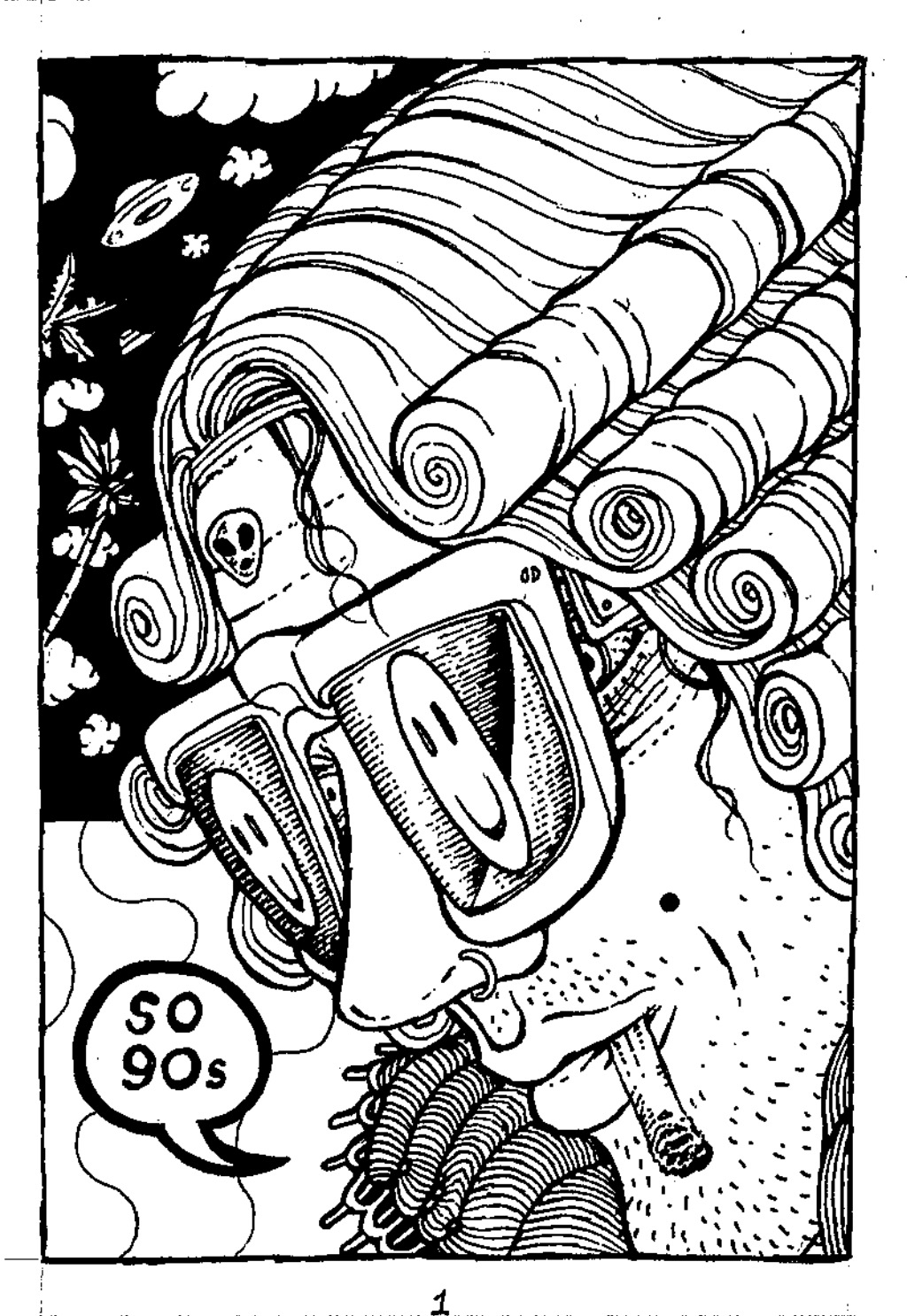ARCADE KID (1)
By:
October 2, 2023
We are pleased to present ARCADE KID, a ’90s “drivethru” written, illustrated, and soundtracked by HILOBROW friend Nikhil Singh. Our readers are urged to check out Nikhil’s dystopian psychedelic-noir novel Club Ded (Luna Press, 2020).

I have listened at the windows. Heard stories of wreckage. Haunted by places that do not truly exist. Eras that do not truly exist. As though I awoke one day. Finding my life cluttered by negative spaces. I watch them fluoresce. Bleak Christmas lights against the darkness. The passive nullity of petrol stations. Open fridges against the night. The infinity of a highway in darkness. Televisions. That new thing called the internet — reducing everything in form. All locked in plastic. Shiny as tomorrow. When enclosed within the stasis of negative space, my perception homogenises. Programmed routines. The impositions of usage. Time fluctuates. Chunks of my life are amputated. Entire seasons. So, I need to go back. To re-experience these lost summers. Aboard an airplane. I suddenly become aware that I am above a desert. This is like the internet — I think. The feeling at its core. Immediacy that is monstrous. Something that is missing — or simply lost. Era revivals are a rite of passage. Generational nostalgia. The late 70s and early 80s saw 50s nostalgia in mainstream culture. Time-lag. Many commercial creators in that time, had been in their teens or twenties during the 50s. Similarly, the late 80s and early 90s experienced, for example, a multitude of Vietnam examinations. Sometimes throwbacks are purely aesthetic. Usually, when the resuscitated era exists beyond living memory. After the French Revolution, for example. Much of the artistic community of Paris, formerly patronised by the aristocracy, grew disgusted with the bourgeoisie ruling elite. The new, prevailing middle-class value system was viewed as corrupt. Appetite driven. For insomuch as the former aristocracy was equally corrupt, they balanced some of the effects of their appetites, by supporting grass-roots creators. Palaces and manor houses required only the finest in arts and craftsmanship. The aristocracy and creative communities had grown mutually and beneficially interdependent. This symbiosis had, over centuries, resulted in incredibly high creative standards. The bourgeoisie were not as supportive. They frowned upon the discernment necessary to maintain classical sensibilities. Creative standards fell, along with the royalists, ushering in a more decorative and utilitarian era. In the years following the Paris Revolution, there was a massive, reactionary migration to the Left Bank. Artistic communities accumulated there. Many opposition groups formed. Like the ‘Water Drinkers’. Their name reflected their stance, which was apposite to prevailing middle-class appetites. Typified in their view, by such things as wine, rich food and the like. Tastes that aped former oppressors. But, which lacked the kind of critical palate cultivated over centuries. Appetite and patronage were the sole contributions of the consumer in this type of relationship. Production expertise (and the refinement of skills and standards) was the sole province of the creators. The aesthetic loss that came in the wake of the guillotine was experienced severely by these producers and craftspeople. Most of the nobility that survived, adapted to middle-class lifestyles. But, there was no return from the creative decline that followed the power shift. There was a marked sense of nostalgia in the former avant-garde. One of the prevailing hipster fashion aesthetics that emerged was Medievalism. It called for an idealised return to ‘better times.’ A lost summer.
DR4G remix of Toni Braxton by the author:
More NIKHIL SINGH at HILOBROW: DREAMING MEDIA (Q&A) | JOURNEY TO IXTLAN | HASHTAG FASHION POLICE PROBLEMS | ILLUMINATE OR DISSIPATE? | HATE ISLAND. ALSO: HADRON AGE SF (2004–2023) | ORIGINAL FICTION at HILOBROW.
